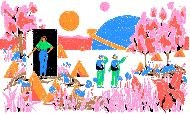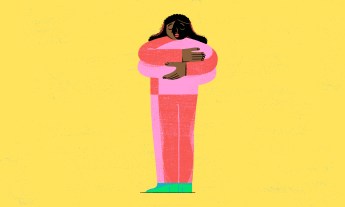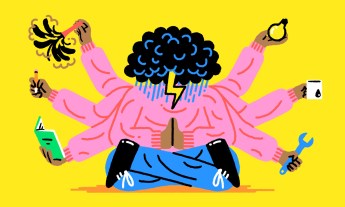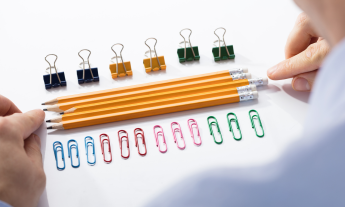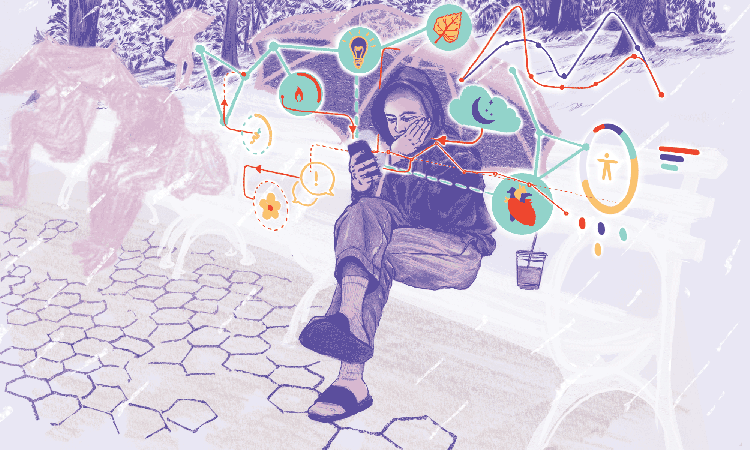
Our electronic devices are often blamed — at times, rightfully so — for alienating us from our inner lives and from each other. But what if we could use them to cultivate self-compassion, not distraction? Technology expert Chris Dancy suggests how.
I’m sorry to tell you, there’s no app for instant inner peace. If you have depression or anxiety, you know it requires hard work to face down your most painful thoughts and find self-compassion.
Some people worry that hiding behind technology is a way to avoid that work. I get that. But for me, I’ve found that tech, in both practical and profound ways, can help me come to terms with dark days, and cultivate a commitment to patience with my thoughts.
Here are three specific things I do that help boost me up when depression drags me down, keep me grounded when panic creeps in, calm my mind when it becomes enraged, and keep me connected when loneliness seems the best option.
1. Log your terror so you can search for it later.
One of the most insidious features of anxiety and depression is their ability to make us completely reboot our mind and start it back up in a mode where it seems like everything is fixed, solid and bad. No matter if it’s your first panic attack or you are on year 40 of relentless, blindsiding panic, you know that the feelings come from nowhere and they always seem brand-new. The feelings lie to you and tell you that this time is different, that this time they won’t go away, that you’re going to go crazy, die or lose everything.
Usually, technology’s main utility during times of sheer terror is to enable you to endlessly search for symptoms of heart attacks and strokes or information on depression, anxiety or suicide. Once, however, when I was in the middle of a panic attack, I came across an old journal entry I’d written while in the grip of a world-class attack. Reading it, I remembered writing it, and slowly my panic decreased. Within a few minutes, I felt better. From then on, I decided to record all my episodes of depression, panic and rage — the physical symptoms, the feelings, the thoughts. I called this my “Wikipedia of Fear,” and I’ve found that I can break the hold that panic has on me when I reread my own words describing a past experience.
In terms of creating your own fear Wikipedia, it’s best to do it when you are not in the middle of an attack. When you’re feeling calm, simply recall a time when you had a panic attack or depressive episode and start listing your symptoms. Break them down into physical symptoms, mental symptoms, thoughts and behaviors. Keep them in notes on your phone or print out the list.
Then, the next time you start to feel any of these dark feelings, grab your phone and pull up the notes. Review the symptoms and compare them to how you are feeling. Your checklist in your Wikipedia of Fear can be the first sign to yourself that you’re going to be OK. You’ve been here before and you lived!
As you become more adept with this coping skill, you can try adding to your symptom checklists in the middle of an attack. You become an observer of your own episode, which gives you some distance, and doing this also helps create a good distraction for yourself.
Below are excerpts from notes I wrote in my phone about an attack I had in 2015.
January 5, 2015, 5–11pm
Physical:
• Cold hands
• Cold feet
• Shaking
• Stomach gets sick
• Can’t sit still
• Dry mouth
Behaviors:
• Keep getting up and walking around
• Can’t stop looking up things on my phone
• Go to drink water, then spit it out
Mental:
• Racing thoughts
• Can’t focus
• Worried about the future
• Can’t keep a sentence together
• Can’t focus
• Thoughts of doom
• Thoughts of shame
Thoughts:
• I’m thinking about my boyfriend
• I’m worried I’ll look foolish in front of friends
• I’m worried I will lose everything
• I’m worried about the project at work
• I’m worried about my ex
• I’m worried I’ll be back in my 20s and get so anxious and sad that I end up in a hospital
As you can see, this anxiety attack was terrifying for me. However, becoming the historian of it somehow served as an important way for me to look at this event — and others — more objectively. Now every time I have an attack, I have a clear map of what is happening and what I can expect.
Sometimes, even with these notes, your mind will still tell you, “Hey, this is a neat trick, but dude, you’re going to die this time” — our minds are such assholes. To that end, I’ve also made it a point to list every panic attack or episode of depression I’ve had, and I keep this list handy. This timeline of my life’s major anxiety and depressive moments serves as another reminder that I’ve come through this before.
Below is part of my “List of Places” that I use when I need to be brought back to the present moment.
• Remember going to the hospital when you were 16 in the middle of the night? May 1985
• Remember crossing the bridge on the way to New Jersey? 1989
• Remember leaving Central Station? February 1991
• Remember Rob Ward’s mother giving me a book after an attack? 1992
• Remember going to the freezer at Highs? March 1993
• Remember going to Julie’s having a panic attack? 1996
The list goes all the way up to the present day. Don’t limit yourself to just anxiety and depression — you can keep lists for anger, loneliness, rage, envy and greed. Really, there is no feeling you can’t map, document, relive and survive.
2. Binge-watch hurt to feel you’re not alone.
During a particularly vicious depressive episode, I was googling “suicide”. I stumbled on someone who posted a video about depression, I watched it, and then I got lost in the maze of YouTube. I looked at the suggested videos and one caught my eye — the title was something along the lines of “I want to die, I’m so depressed.” Reluctantly, I clicked on the video and started watching this person talk about their symptoms and how hopeless they felt.
I realized: I wasn’t alone in the world. There were other people like me. For a moment, though, I was caught off guard. How could watching someone fall apart cancel out my own despondent feelings? What was going on?
A week later, I had a panic episode, so I tried it again. I searched for and watched videos of people having anxiety attacks, and within a few moments, sure enough, the videos helped cancel out my own anxiety.
Finding a way to feel less alone when those episodes hit me was world-changing. I doubled down on this activity, creating playlists on YouTube of all the different emotions I tended to get weighed down by: depression, panic, rage and so on. To this day, I still use the videos when my own symptom logs aren’t doing the trick.
These playlists have also created a new routine that enabled me to overcome one of my darkest emotions, one that always leads to panic and depression: anger. For me, anger is the gateway drug to shame, and shame takes me straight to depression and anxiety. Because I needed a way to inoculate myself against anger, I started watching public freak-out videos on Reddit. These videos helped me see how ridiculous anger is and helped me spot it in myself.
Our devices don’t have to be our hiding place, where we avoid other people or even ourselves. Instead, we can use them as bridges to create deep meaningful connections, with ourselves and with people around us.
3. Know this: You are what drains your phone battery.
I believe a person’s understanding of happiness can be found in the battery consumption section of their phone. Within every smartphone is a function — frequently in settings — that will show you which apps on your device are using the most battery power. It’s usually sorted by the last 24 hours or the last seven days.
This list can serve as a powerful map for your emotions. For instance, if you notice you’ve been feeling better than normal, chances are the apps listed in the last 24 hours are radically different from the apps you’ve used in the past seven days. The opposite is also often true: if you’re feeling blue, your app usage may have changed.
The next time you’re feeling great, take a screenshot of your battery percentages and try to keep track of your happy apps — whatever you’ve been spending more time with lately that has kept you feeling good (and not feeling bad). More important, when you start feeling a bit low, pull up your list of happy apps and try to use those apps that bring you joy.
For me, I’ve seen that I’m most happy when using Evernote, Maps and Calendar, and I’m most depressed and sad when I’m spending time and battery power on Twitter, Fitbit and Facebook. When times get tough, I avoid sad apps and focus on happy ones. Get to know who you are by examining the reflection coming back to you in the apps you use. It’s like fixing your digital hair, but with more profound implications for your overall well-being.
Excerpted with permission from the new book Don’t Unplug: How Technology Saved My Life and Could Save Yours by Chris Dancy. Published by St. Martin’s Press. Copyright © 2018 by Chris Dancy.
Watch Chris Dancy’s TEDxVienna talk here:




